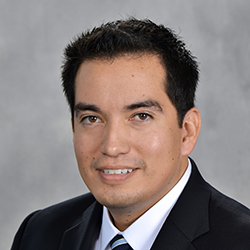
By Robert Murphy
After a year of monumental changes driven by the COVID-19 pandemic, it’s a good time to touch upon how the commercial real estate lending market has fared and how the landscape may have changed for new borrowers. Loan originators working at real estate-focused (non-recourse) bridge lending platforms have shared how their deal underwriting has changed. Since a large amount of their deal flow involves transitional and repositioned properties, these originators are well-versed in quantifying risk. Overall, reliance on fundamental analysis and plenty of patience allowed them to have a relatively stable year, all things considered.
Industry Performance
It is worth noting that commercial real estate lenders were relatively resilient in reacting to the economic meltdown and pivoting in the new COVID-19 environment. Not surprisingly, the numbers show loan originations plummeted during the second quarter – the Mortgage Bankers Association’s 2020 4th Quarter Origination Index reported originations for bank, insurance, CMBS and agency loans fell by more than 30% in the second quarter. What may be surprising is that originations bounced back by summer and increased 12% during the third quarter, and new loan production finished the year relatively strong with an additional 75% increase in the final quarter.
COVID Analysis & Structuring
Loan originators were doing work despite a global pandemic. They became experts at synthesizing evolving data and parsing out relevant information from potential second- and third-order effects that may not materialize. Many originators have emphasized a bottom-up approach to their analysis. Higher scrutiny was placed on tenant credit and business plans – how would they fare with further prolonged shocks to the economy? A best-in-caliber group even required interviews with all the tenants and executed estoppels from 90% of tenants. Collection histories and store sales from retail tenants were must-have data points. Simply put, lenders were not willing to overstretch if they lacked what they believed to be critical pieces of information during their due diligence.
Another common theme has been the originators’ position regarding market conditions. Deal underwriting was based on current market conditions. They gave no credit for improving cap rate, occupancy, or leasing assumptions in the near term without substantial support. The lenders were not going to get ahead of current market conditions; rather, they would adjust their assumptions when conditions improve.
Originators have generally preferred multifamily and industrial opportunities and shied away from troubled asset classes such as hospitality and retail that isn’t anchored by grocery or drugstore tenants. Deals with more perceived risk or involving less-favored asset classes saw leverage limited to 55% to 60% LTV. Some originators have also structured “COVID Reserves” into loans, which comprised of six to 18 months of loan payments funded into a reserve account by the lender. Additionally, lenders have also looked to mitigate risk of a soft recovery by shortening their bridge loans to a maximum of 24 months.
Advice to Borrowers
There are still borrowers looking to obtain a bridge loan in today’s environment, and they should consider the following advice.
- Market fundamentals remain soft. There remains a potential for a 5% to 10% reduction in available leverage if conditions worsen. Borrowers should be prepared to contribute additional equity to any new project.
- More loan structure should be expected in any new loan given the uncertain economic environment.
- Research various lenders. Do they have discretionary control over their capital, like balance sheet lenders, or do they require approval from their capital partners?
- The lowest cost of capital lender may not be the best suitor in a down market. A flexible lender that can approve a new lease in a timely fashion may provide better value for the borrower than saving an extra 50 basis points.
- Gather as much information as possible for any tenants at a property. Tenancy is a critical factor in today’s climate and one that will be thoroughly investigated.
It has been a year none of us will ever forget. Liquidity is ample and best-in-class lenders are continuing to originate loans in this difficult environment. Hopefully, we are on the other side of this pandemic sooner rather than later to finish strong in 2021.

Rob Murphy is Vice President in Transwestern’s Structured Finance group, specializing in providing debt and equity placement services for the firm’s institutional and corporate clients nationwide.

